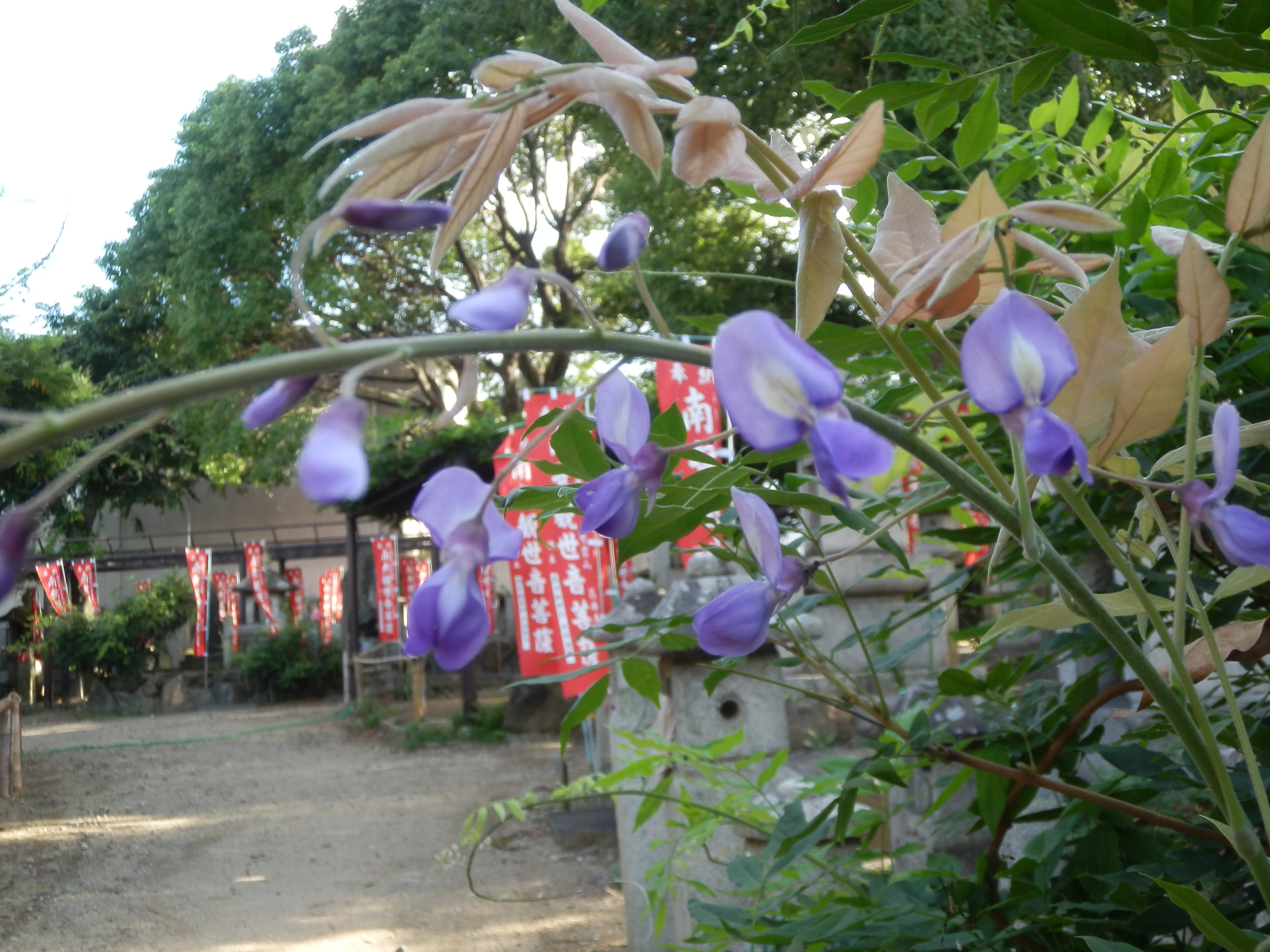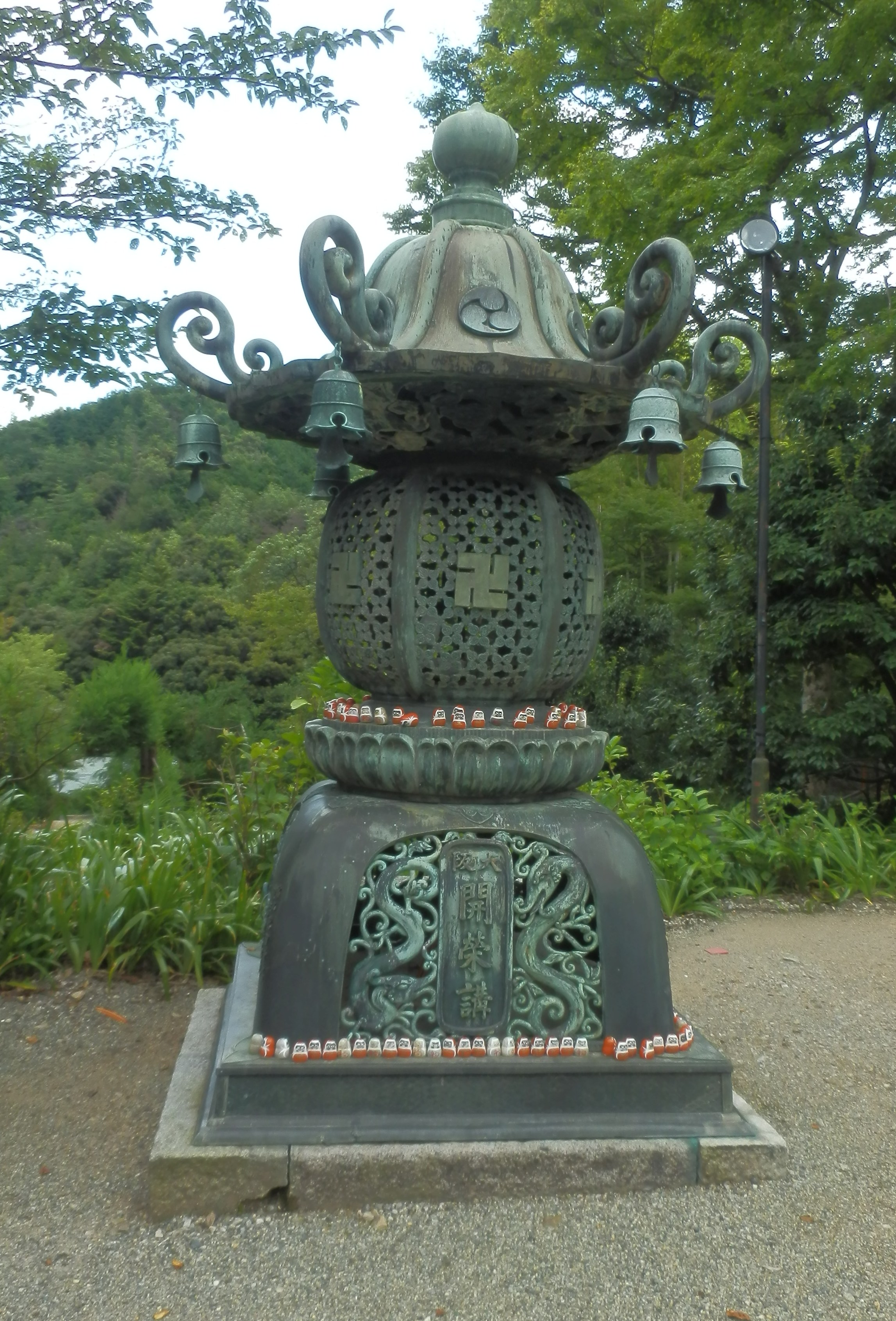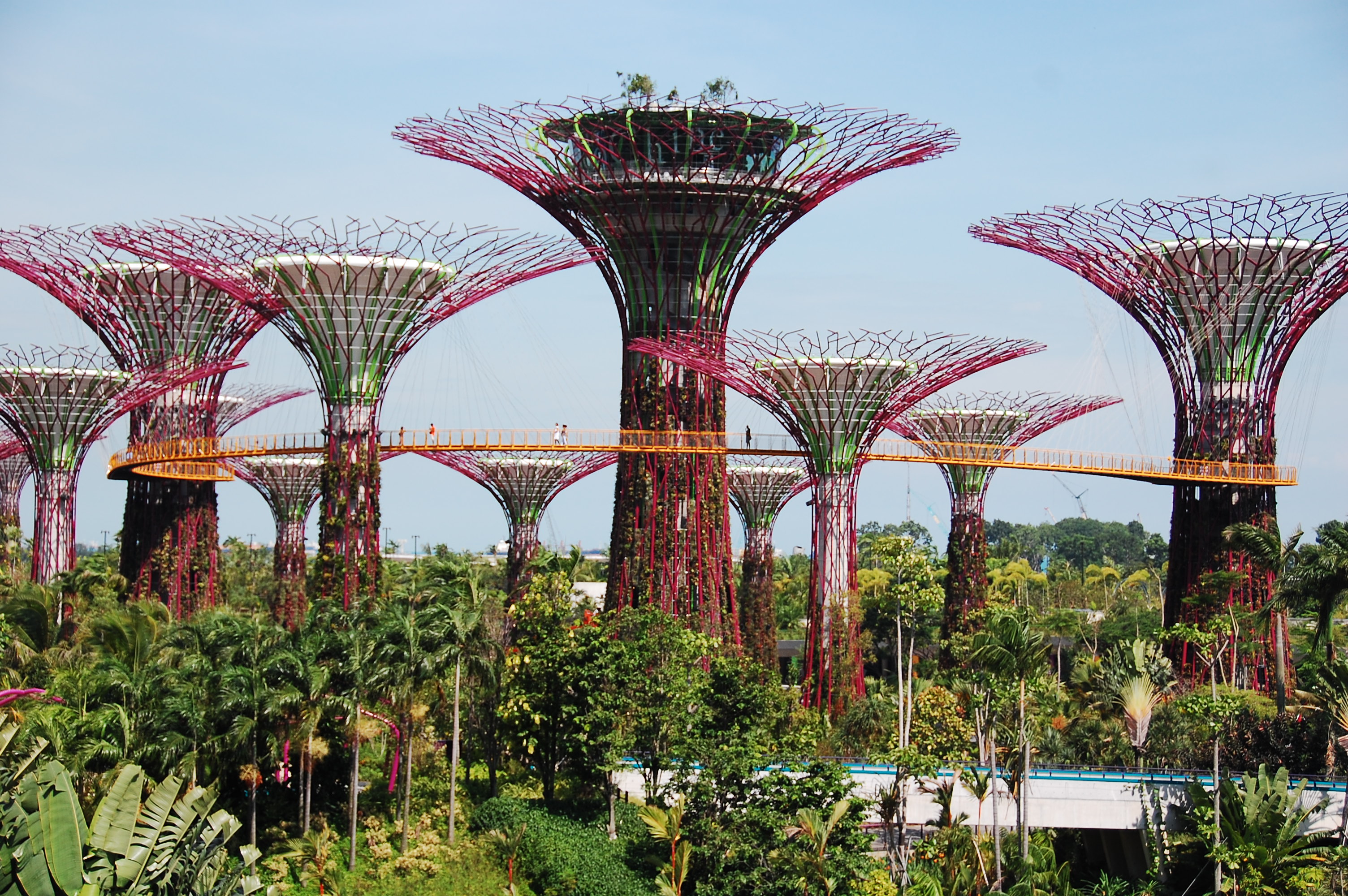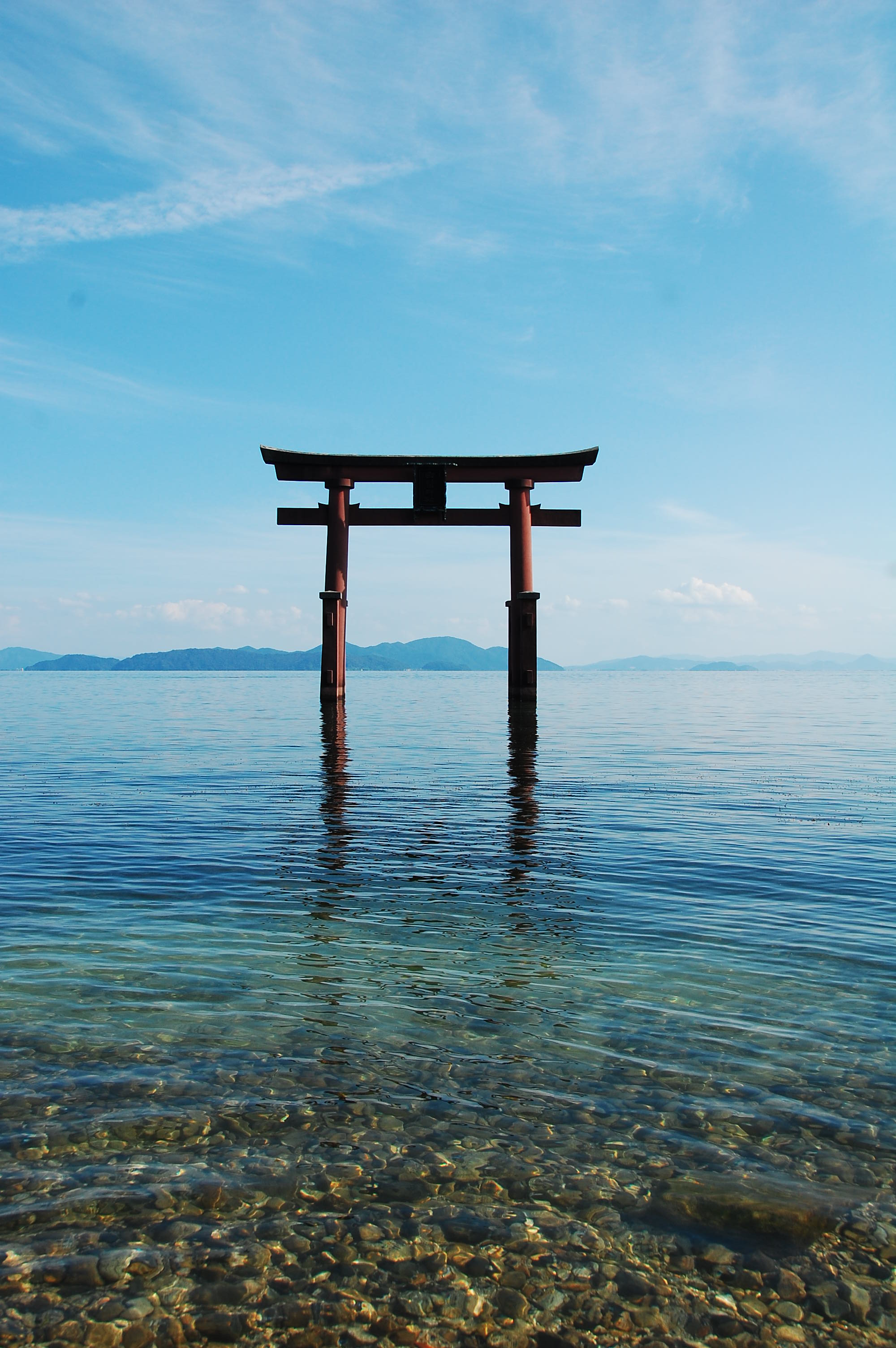Saigoku Kannon Pilgrimage: Fujii-dera
葛井寺
Fujii-dera is temple number 5 of 33 on the pilgrim circuit, and as its name “Wisteria Well Temple†would suggest, it is a wonderful place to visit when the fuji are in bloom. These fragrant purple flowers typically bloom in very late April or in early May, around Golden Week.
 Other than the gorgeous blossoms, the main enshrined image of Fujii-dera might attract your attention. It is a senju (thousand armed) Kannon, which isn’t terribly rare, but this carving, made in the 700s in dry lacquer style, actually has a thousand arms. In fact, it has 1,042. The image itself is a National Treasure and the Kannon of Fujii-dera is prayed to for the warding off of disaster, and also by women wanting a safe delivery in childbirth. The image is displayed on the 18th of each month.
Other than the gorgeous blossoms, the main enshrined image of Fujii-dera might attract your attention. It is a senju (thousand armed) Kannon, which isn’t terribly rare, but this carving, made in the 700s in dry lacquer style, actually has a thousand arms. In fact, it has 1,042. The image itself is a National Treasure and the Kannon of Fujii-dera is prayed to for the warding off of disaster, and also by women wanting a safe delivery in childbirth. The image is displayed on the 18th of each month.
The temple grounds are small, a great contrast to the sprawling mountainside temples we’ve seen so far. There are four gates, one for each of the four cardinal directions, which lead out into the bustling suburbs. You may notice as you approach that you are walking through a covered arcade. Historically, many temples were served by monzen machi, just such streets lined with shops, eateries, and inns (among other things), to meet the needs of pilgrims on the road.
The temple grounds themselves are transformed into a market square once a month on the 18th, corresponding to the day the Fujii Kannon is put on display. At these markets you can find everything from foods to all manner of items from the mundane (like underwear and caps) to the artistic or sacred.
 Like several of the pilgrimage temples, this one contains a mini pilgrimage on the grounds. Those who are unable to undertake the full pilgrimage can simulate it for the same spiritual benefit if their hearts are really in it. You will find a few more interesting statues as you walk around. One is a depiction of Kannon riding a dragon known as the Sonshinryu Kannon. Although the pose of Kannon is pretty static, the billowing cloak gives a sense of motion and wind. You will also find a Shusse Jizo, to whom people pray for success in projects for business or studies, and a small shrine on the water to Benzaiten, the patron of music and poetry.
Like several of the pilgrimage temples, this one contains a mini pilgrimage on the grounds. Those who are unable to undertake the full pilgrimage can simulate it for the same spiritual benefit if their hearts are really in it. You will find a few more interesting statues as you walk around. One is a depiction of Kannon riding a dragon known as the Sonshinryu Kannon. Although the pose of Kannon is pretty static, the billowing cloak gives a sense of motion and wind. You will also find a Shusse Jizo, to whom people pray for success in projects for business or studies, and a small shrine on the water to Benzaiten, the patron of music and poetry.
The current Hondo was built in 1753, but there has been a temple at this site for about 1,400 years. You can see the foundation stone of the family temple built on the site by the Fujii clan all those years ago. The pilgrim book stamp office is to one side of the hondo.
 In addition to the wisteria vines, there is one other vegetative attraction at Fujii-dera. The Sanko Maki is a special type of pine tree sacred to Buddhists because it has three prongs on each set of leaf spikes. These are considered to represent the three aspects of Buddhism –the Buddha, the Dharma (teaching), and the Sangha (religious community). Kobo Daishi, founder of Shingon Buddhism, is said to have brought the seeds of the sanko maki to Japan from China in 805.
In addition to the wisteria vines, there is one other vegetative attraction at Fujii-dera. The Sanko Maki is a special type of pine tree sacred to Buddhists because it has three prongs on each set of leaf spikes. These are considered to represent the three aspects of Buddhism –the Buddha, the Dharma (teaching), and the Sangha (religious community). Kobo Daishi, founder of Shingon Buddhism, is said to have brought the seeds of the sanko maki to Japan from China in 805.
The temple is located in the south of Osaka, in a town aptly named Fujiidera. Although this may seem a bit far to many Hyogo dwellers, Fujii-dera is rather easy to reach from the transportation hub that is central Osaka. Take the Kintetsu Minami line from Osaka Abenobashi station (a 5 minute walk from Tennoji) to Fujiidera station.
 To find out more about the history of Fujii-dera, check out Sacred Japan (http://sacredjapan.com/Temple%2005/Temple05.htm).
To find out more about the history of Fujii-dera, check out Sacred Japan (http://sacredjapan.com/Temple%2005/Temple05.htm).
Happy pilgriming!
-Emily Lemmon





